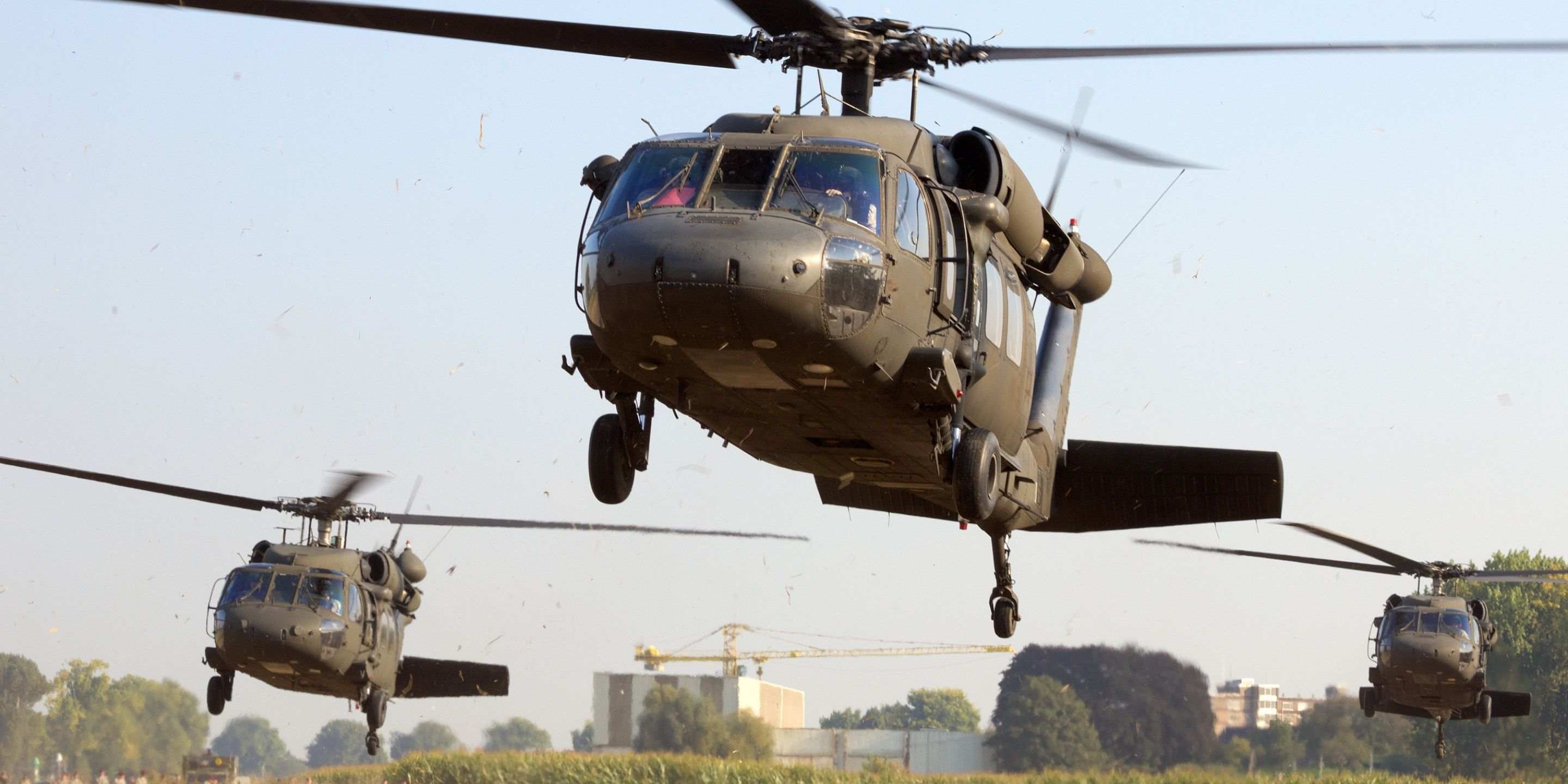Check out the Logistics and Training Programs Supporting the UH60 Fleet
The UH60: A Comprehensive Overview to Its Advancements and capacities
The UH-60 helicopter, a keystone of United state Military air travel considering that its creation, exemplifies a blend of adaptability and progressed engineering. Understanding the complete extent of the UH-60's advancement exposes understandings into the future of army aeronautics and the difficulties that lie in advance.
Summary of the UH60
The UH-60 Black Hawk is a versatile multi-role helicopter made to support a large range of military operations. Created by Sikorsky Airplane in the late 1970s, the Black Hawk has since become a keystone of United state Army aeronautics and has actually been adopted by various army forces around the world. Its style stresses speed, agility, and the ability to operate in varied environments, making it ideal for missions ranging from army transport to clinical evacuation.
The helicopter features a durable airframe and advanced avionics, which boost its operational effectiveness in both night and day conditions. Its twin-engine setup guarantees integrity and remarkable performance, allowing it to execute in difficult scenarios, including high-altitude and warm weather condition settings. The Black Hawk's roomy cabin can accommodate different hauls, permitting versatility in goal execution.
Throughout the years, the UH-60 has actually gone through numerous upgrades, integrating technical improvements to boost its capabilities. UH60. This adaptability ensures that the Black Hawk stays pertinent in the developing landscape of army procedures, maintaining its status as an important possession for militaries around the globe. Its substantial functional background emphasizes its significance in modern-day army aviation
Secret Abilities
Amongst the countless attributes that contribute to the UH-60 Black Hawk's enduring success is its excellent selection of vital capacities. Popular for its versatility, the UH-60 masters numerous operational environments, meeting functions such as troop transport, clinical emptying, and logistical support. Its ability to lug a significant haul, generally approximately 11 troops or up to 8,000 extra pounds of freight, improves its performance in varied missions.
The helicopter's remarkable speed, with a maximum travelling speed of around 150 knots, enables quick deployment and removal of personnel. Additionally, the UH-60 flaunts sophisticated maneuverability, enabling it to browse challenging terrains and do essential goals in constrained spaces.
Furnished with durable avionics and flight control systems, the Black Hawk guarantees reliable efficiency under damaging weather condition conditions and throughout evening operations. Its range, around 400 nautical miles, even more prolongs operational capacities, enabling it to reach remote locations efficiently.
Technological Innovations
Integrating innovative modern technology, the UH-60 Black Hawk has undertaken substantial advancements that boost its functional performance and security. One of one of the most notable advancements is the combination of advanced avionics systems, which includes electronic flight control systems and multifunction screens - UH60. These systems provide pilots with real-time data, enhancing situational awareness and decision-making throughout missions
Additionally, the Black Hawk features enhanced communication systems that help with seamless coordination with ground forces and command. These systems, consisting of satellite communications and safe and secure voice capacities, guarantee reliable connectivity in varied functional environments.
The airframe has actually likewise been updated with enhanced composite materials, which lower weight while enhancing structural honesty. This innovation adds to boosted gas effectiveness and total efficiency. The helicopter is outfitted with innovative blades modern technology, including the four-blade primary rotor system, developed to optimize lift and reduce noise.
The consolidation of evening vision safety glasses (NVG) compatible cockpit and external lighting systems enables for boosted evening procedures, even more expanding goal capacities. On the whole, these technical developments position the UH-60 Black Hawk as a flexible and resistant platform, all set to meet the challenges of modern-day warfare and humanitarian goals.
Operational Background
Considering that its introduction in the late 1970s, the UH-60 Black Hawk has actually established a recognized operational background defined by its versatility and integrity throughout a varied variety of goals. Made for utility transportation, the Black Hawk has played a crucial function in different military operations, consisting of air attack, medevac, and logistical support.
The aircraft got importance throughout the united state military treatments in Panama and the Gulf War, showcasing its ability to perform under intense conditions. Its advanced avionics and robust layout have enabled effective missions in atmospheres varying from metropolitan landscapes to rugged surfaces. The UH-60 has adapted to evolving fight scenarios, incorporating brand-new modern technologies and abilities over the decades.
Moreover, the Black Hawk has offered allied pressures in numerous international disputes, enhancing its standing as a global armed forces asset. Altruistic objectives, catastrophe relief initiatives, and peacekeeping operations further highlight its flexibility and dedication to offering both noncombatant and army needs. Today, the UH-60 remains to be a fundamental element of united state Army aviation, showing a heritage of functional quality useful content and advancement that has actually sustained for over 4 decades.
Future Dope

As the UH-60 Black Hawk remains to maintain its heritage in military operations, future developments are poised to enhance its capacities even more. The U.S. Military and its partners are checking out advanced modern technologies that aim to boost both efficiency and flexibility. Secret locations of emphasis consist of boosted avionics, improved engine performance, and raised payload ability, which will certainly allow the Black Hawk to do a more comprehensive array of objectives.
One substantial advancement is the integration of fabricated intelligence (AI) systems to aid pilots in navigating and mission preparation, consequently lowering cognitive work and raising functional effectiveness. Furthermore, the consolidation of sophisticated materials in airframe layout is expected to improve toughness while simultaneously minimizing weight.


As the useful reference armed forces landscape progresses, the Black Hawk will remain to adjust, strengthening its condition as a vital asset for air flexibility and battle procedures in the years ahead.
Conclusion
Continual advancements, consisting of the combination of AI and hybrid-electric systems, position the UH-60 for improved performance in future fight circumstances. As armed forces needs evolve, the UH-60 will certainly continue to be a keystone of aerial operations.
